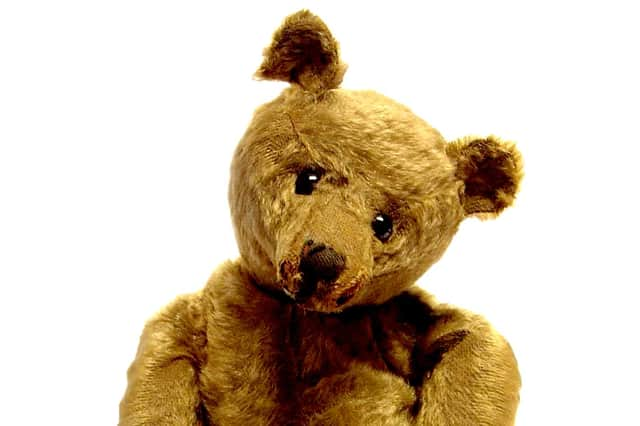Steiff bears can fetch thousands of pounds, says Sheffield expert


I wonder how many parents, over the years, have done the self same thing.
Many, I think, and mostly I suspect in search of teddies.
America has always laid claim to being the birthplace of the ‘Teddy bear’.
Advertisement
Hide AdAdvertisement
Hide AdWhy? It is said that, on a hunting trip in 1902, then President Theodore ‘Teddy’ Roosevelt, when having a perfect opportunity to shoot a bear, declined, refusing to kill it.
It is said Morris Michtom made a small commemorative bear for the President in commemoration of the incident – Teddy’s bear.
It is Germany, though, who can lay claim to the most famous teddy bear maker of all; Margarete Steiff, who was producing jointed bears from 1902 – a Steiff bear has the trademark ‘Steiff’ embossed on a small, white metal button in its ear.
Classic Steiff bears have ears that are small, cupped and set wide apart, noses with horizontal stitching joining an upturned Y-shaped mouth and paws featuring four – or five on very early bears – stitched claws.
Advertisement
Hide AdAdvertisement
Hide AdAn early Steiff bear in good and original condition can realise many thousands of pounds.
When teddy bear mania arrived in Britain, existing toy manufacturers began to produce their own teddies.
The banning of German imports during the First World War led to an increase in the number of British makers including Chad Valley, Farnell and Deans.
By the Second World War, British bears had become plumper with shorter legs and fatter faces.
Synthetic fibres replaced the mohair plush. British bears always realise less than their German counterparts, but still are and always have been very popular with collectors.